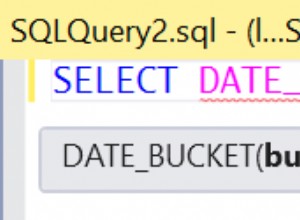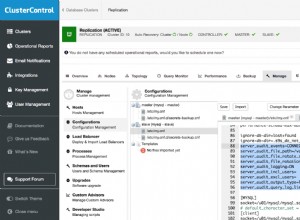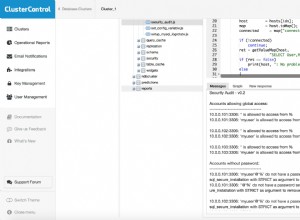Z wiersza poleceń uruchom sqlcmd :
sqlcmd -S <server> -i C:\<your file here>.sql
Wystarczy zastąpić <server> z lokalizacją twojego pola SQL i <your file here> z nazwą twojego skryptu. Nie zapomnij, że jeśli używasz instancji SQL, składnia to:
sqlcmd -S <server>\instance.
Oto lista wszystkich argumentów, które możesz przekazać sqlcmd:
Sqlcmd [-U login id] [-P password]
[-S server] [-H hostname] [-E trusted connection]
[-d use database name] [-l login timeout] [-t query timeout]
[-h headers] [-s colseparator] [-w screen width]
[-a packetsize] [-e echo input] [-I Enable Quoted Identifiers]
[-c cmdend] [-L[c] list servers[clean output]]
[-q "cmdline query"] [-Q "cmdline query" and exit]
[-m errorlevel] [-V severitylevel] [-W remove trailing spaces]
[-u unicode output] [-r[0|1] msgs to stderr]
[-i inputfile] [-o outputfile] [-z new password]
[-f | i:[,o:]] [-Z new password and exit]
[-k[1|2] remove[replace] control characters]
[-y variable length type display width]
[-Y fixed length type display width]
[-p[1] print statistics[colon format]]
[-R use client regional setting]
[-b On error batch abort]
[-v var = "value"...] [-A dedicated admin connection]
[-X[1] disable commands, startup script, environment variables [and exit]]
[-x disable variable substitution]
[-? show syntax summary]




